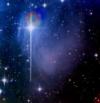

| Visitors Now: | |
| Total Visits: | |
| Total Stories: |

| Story Views | |
| Now: | |
| Last Hour: | |
| Last 24 Hours: | |
| Total: | |
FDA: Eating Fish With Radiation 2400% Above Federal Limits “Poses No Health Risks” … EYE Report
Japan Sets Radiation Standards For Fish…
Article found HERE

The fish also contained cesium 137, which decays much more slowly than iodine 131, at a level of 526 becquerels per kilogram.
“Clearly the fish are consuming highly radioactive food,” said Paul G. Falkowski, a professor of marine, earth and planetary sciences at Rutgers University. But Professor Falkowski emphasized that even those levels were not likely to present health hazards in Japan or elsewhere, since fishing is restricted in Japan and these levels of radiation are not likely to travel far.
Still, experts on radiation in seafood said it was nearly impossible to get a full sense of the scope of the environmental and health risks until the Japanese released information on radiation levels in more species of fish and seaweed and in a greater number of locations. Measurements in the seawater are often not a good indication of how much radiation may be entering the food chain, scientists say.
U.S. Seeks to Reassure on Contaminated Food…
U.S. public-health officials sought Tuesday to reassure consumers about the safety of food in the U.S., including seafood, amid news that fish contaminated with unusually high levels of radioactive materials had been caught in waters 50 miles from the stricken Fukushima nuclear plant in Japan.
No contaminated fish have turned up in the U.S., or in U.S. waters, according to experts from the Food and Drug Administration, Environmental Protection Agency and Centers for Disease Control and Prevention. They expressed confidence that even a single fish sufficiently contaminated to pose a risk to human health would be detected by the U.S. monitoring system.
They also dismissed concerns that eating fish contaminated at the levels seen so far in Japan would pose such a risk.
Thomas Frieden, head of the CDC in Atlanta, said he expected continued detection of low levels of radioactive elements in the water, air and food in the U.S. in coming days, but that readings at those levels “do not indicate any level of public health concern.”
The U.S. federal drinking water standard for radioactive Iodine-131 is 3 picocuries per liter, but levels exceeding that by many times have been detected in rainwater sampled in California, Idaho, Minnesota, Ohio, Pennsylvania and Massachusetts …


